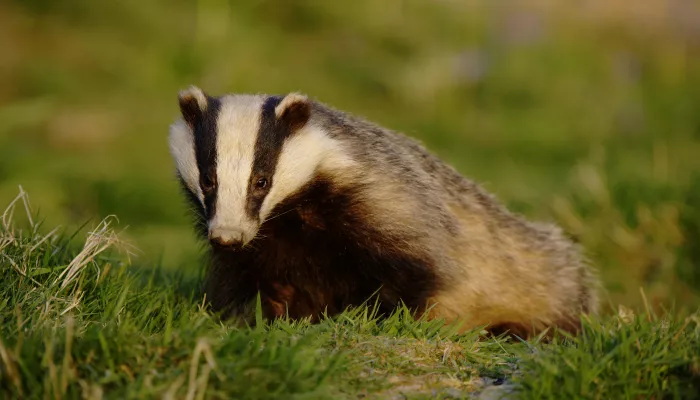About
The black-and-white striped badger is a well-known species in the UK. It is our largest land predator feeding on small mammals, birds’ eggs, worms, fruit and plants. Badgers live in large family groups in burrows under the ground called a ‘sett’. You know if a sett is lived in as it is usually neat and tidy with clean doorways marked with piles of used bedding made up of dry grass and leaves. There will also be a particularly smelly pit nearby that the badgers use as a toilet! They have strong front paws, which they use to dig for food. Cubs are born in January or February but spend the first few months underground only coming out in spring when it is a little warmer.
How to identify
An unmistakable animal, the badger is large and grey, with a short, fluffy tail, black belly and paws, and a black-and-white striped face.
Did you know?
Badgers can eat several hundred earthworms a night! They are also one of the only predators of hedgehogs - their thick skin and long claws help them to get past the vicious spines. If food is in short supply, badgers will forage during the day, as well as at night. If there are badgers nearby, you can tempt them into your garden by leaving unsalted peanuts out - a tasty snack for our striped friends.
The Wildlife Trusts believe that the scientific evidence available does not support a cull as it would not decrease incidences of bTB transmission from badgers to cattle. Instead it would simply disperse badger populations to the detriment of the countryside. Instead, we are urging for vaccinations against bTB to be the way forward.

